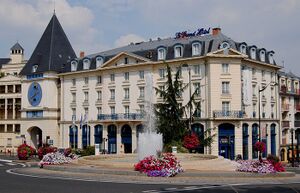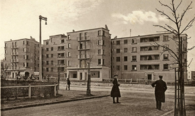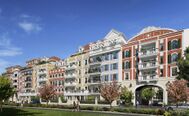Vitruvian New Classical Movement

The Vitruvian New Classical Movement (also called Vitruvian beautification) is contemporary cultural and architectural movement put in place by the Vitruvian Parlamentu in order to restore practises of Classical architecture with the objective of a restoration of Vitruvian culture. The movement that was put in place in 1992 involves replacing brutalist architecture with a style of New Classical architecture and is most notable in the capital city of Incudine. The revivalism of the classical architecture in Vitruvia is seen as a rejection of minimalism and embrace of national history and culture.
History
Original Draft Plan
In April of 1990 Vitruvian architect Napoleone Leclerc presented a draft plan to the Vitruvian Parliament, putting forward a movement that would cost an estimated $160 million for the first 10 years. The plan was originally supposed to be exclusive to a municipality of Incudine, Saint-Row, which had become the subject of "brutalist architecture" following the Civil War due to a decrease in economic prosperity. Saint-Row was chosen due to it's known popularity prior to the civil war for having renowned drinking establishments called "Beiecases". The proposal was initially rejected due to cost, however a group of architects lead by Leclerc managed to minimise costs and sent yet another proposal to the parliament which was accepted and put into place by January 1992.
Leclerc described the movement as "A rejection of modern architectural standards and brutalist architectural design. Minimalism takes all colour out of cities and the movement aims to return it."
Success of Saint-Row
Following approval of the project, the "Saint-Row beautification" began in 1992 with the reconstruction of the old Grand Hotel. From there, much of the town-centre was revitalised and rebuilt with the aim of beauty and environmental wellbeing. Prior to the rebuild the district had been expanded with a modernist urban scheme with a lot of social housing but the concentration of marginilised groups had a toll. The town had become more sinister, filled with rubbish, petty crime and poverty.

